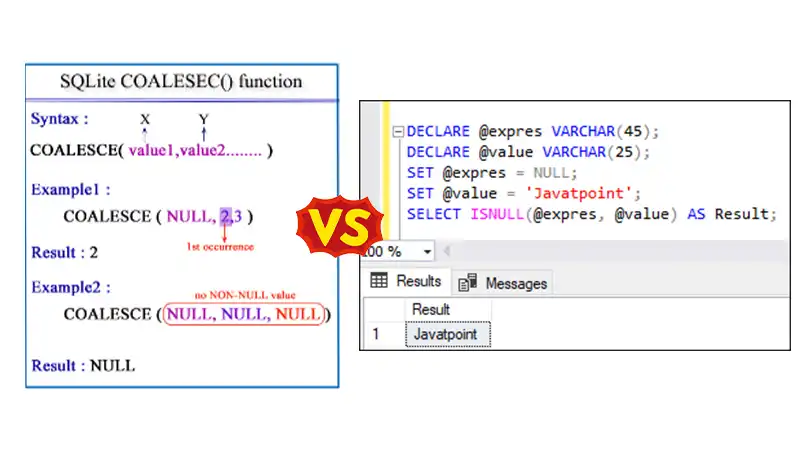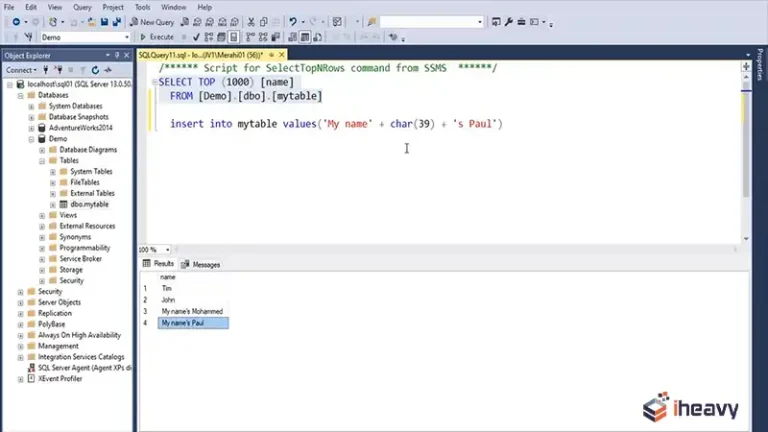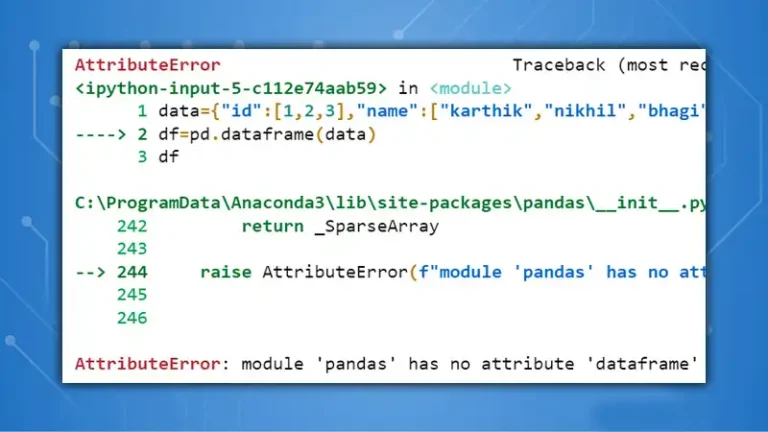COALESCE vs ISNULL | Choosing the Right Function for Handling NULL Values
When working with SQL, handling null values efficiently is crucial for accurate data analysis and reporting. Two common functions used for this purpose are COALESCE and ISNULL. Both functions serve to replace null values, but they do so in slightly different ways and are best used in different scenarios.
In this article, we’ll try to help you get a closer look at what separates these two. So, let’s get started.

COALESCE vs ISNULL: What’s Different?
The COALESCE function returns the first non-null value from a list of arguments. This makes it very versatile for handling multiple potential null values in one go.
COALESCE Syntax:
COALESCE(expression1, expression2, ..., expressionN)
Example:
SELECT COALESCE(NULL, NULL, 'First non-null value', 'Another value') AS Result;
-- Output: 'First non-null value'The ISNULL function, on the other hand, replaces null with a specified replacement value. It takes exactly two arguments: the value to check and the replacement value if the first is null.
ISNULL Syntax:
ISNULL(expression, replacement)
Example:
SELECT ISNULL(NULL, 'Replacement value') AS Result;
-- Output: 'Replacement value'Which Is Better, COALESCE or ISNULL?
There are certain factors that you should consider when picking between COAESCE and ISNLULL. They are:
Flexibility
COALESCE: More flexible because it can take multiple arguments. It evaluates each one in turn and returns the first non-null value.
SELECT COALESCE(NULL, NULL, 'Non-null', NULL) AS Result;
-- Output: 'Non-null'
ISNULL: Limited to two arguments, which makes it less versatile when dealing with multiple potential null values.
SELECT ISNULL(NULL, 'Replacement') AS Result;
-- Output: 'Replacement'Data Type Handling
COALESCE: Returns the data type of the first non-null argument. This can sometimes lead to unexpected results if the data types of the arguments are not the same.
SELECT COALESCE(NULL, 'string', 123) AS Result;
-- Output: 'string' (string data type)
ISNULL: Returns the data type of the first argument. If the first argument is null, it returns the data type of the replacement value.
SELECT ISNULL(NULL, 123) AS Result;
-- Output: 123 (integer data type)COALESCE vs ISNULL: Performance
In real-world applications, the performance difference between COALESCE and ISNULL is often negligible unless you are working with very large datasets or high-frequency queries. For most use cases, the choice between the two should be guided by functionality and readability rather than performance alone.
When Should I Use COALESCE?
Use COALESCE when you need to handle multiple potential null values in a single column or across multiple columns. It’s particularly useful in scenarios where you have a fallback sequence for your values.
Example:
SELECT COALESCE(home_phone, office_phone, mobile_phone, 'No contact') AS ContactNumber
FROM employees;When Should I Use ISNULL?
Use ISNULL when you need a quick, simple replacement for null values, especially when you are dealing with one specific value or column.
Example:
SELECT ISNULL(bonus, 0) AS BonusAmount
FROM salaries;Frequently Asked Questions
Is COALESCE faster than ISNULL?
COALESCE can be slightly slower than ISNULL because it checks multiple values. ISNULL is Generally faster in scenarios with only one null check because it evaluates fewer arguments.
Can I use COALESCE for default values in table definitions?
No, COALESCE is used in queries. For table definitions, you should use default constraints.
Conclusion
While COALESCE may introduce a slight overhead due to function calls, its impact on performance is generally minimal in most practical applications. For most scenarios, COALESCE provides a convenient and efficient way to handle NULL values, with negligible performance differences compared to direct NULL handling techniques.

![How To Use Floor In SQL Query [A 7-steps Solution]](https://www.iheavy.com/wp-content/uploads/2023/12/How-To-Use-Floor-In-SQL-Query-768x432.webp)




![SQL Server Check If Table Exists | [Answered]](https://www.iheavy.com/wp-content/uploads/2024/06/SQL-Server-Check-If-Table-Exists-768x432.webp)